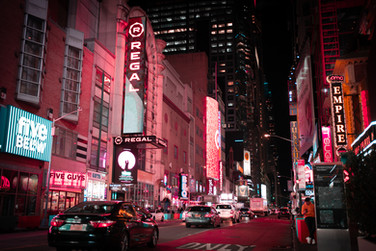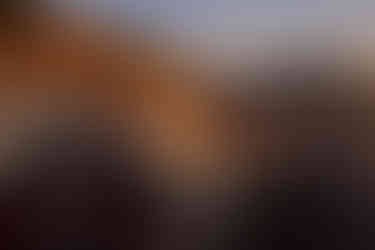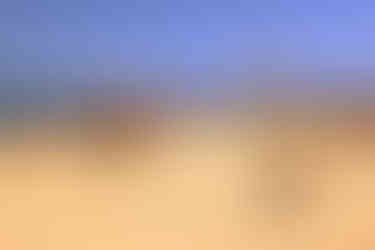There are plenty of niche styles of photography, which could be relevant, but aren’t captured in this blog post’s recommendations for photogenic cities to travel to in 2024. Examples include: sports photography, fashion photography, music event photography, marine life photography, safari & wildlife photography, astrophotography, automotive photography, archeological photography, macro photography and more. Instead, it’ll focus on photogenic travel destinations from a holistic perspective (you could even call it "lifestyle"), meaning that you can enjoy visiting these places with someone who’s neither a photographer nor content creator, e.g. a partner or friend(s).
Martin Creates also takes camera technology and photography gear into account, so we will also run through some of my favourite camera bodies and lenses, that I used to take the photos, and more importantly, why I chose them for that particular travel itinerary.

Photo of St Paul's Cathedral in London, UK. Photo captured by Martin Creates with a Canon 6D Mark I 24-105mm in October 2022
In recent times, I've noticed that a lot of travel vlogs and blogs describe the cities featured in this article as “mainstream”, and yet, every time I visit one of them, I discover something new and hidden; often those are the memories that I hold onto forever. Some might argue this is because of factors such as seasonality, or "who you travel with". Whilst these can make a noticeable difference to your travel experience, in most cases, if you ask me, I think it is mainly because our creative-IQ, and the places we've been to before, are both constantly evolving and we don't always realise or accept this. The sooner we accept that as a fact, the sooner we will start to enjoy travelling, irrespective of the destination(s).
So that’s my challenge to you; view anywhere you go as a fresh canvas, especially if you’ve been before.
Marrakesh, Morocco:
Often mistaken as the capital of Morocco, this timeless city entices photographers and artists from around the world due to its vibrant colours, intricate architecture, and bustling souks, all of which create a visually captivating atmosphere.
The city's historic Medina, with its labyrinthine streets and energetic marketplaces, offers a rich tapestry of cultural and street photography opportunities. You'll need to be quick with your camera as this UNESCO Heritage Site can be extremely intense with hectic foot traffic being the hardest obstacle to overcome in my experience. The more advanced photographers will quickly notice that there are plenty of interesting roads and corners, where cinematic street photographers could spend the whole day working with the natural lighting and shadows.
The iconic Koutoubia Mosque and Bahia Palace showcase exquisite Moorish architecture, providing striking subjects for architectural photography. Later in post editing, notice the textures and craftsmanship that brought these designs to life. It amazed me to think that it's all outlived hundreds of generations.
Jardin Majorelle, with its vibrant blue structures and lush botanical gardens, offers a unique and colourful backdrop for photos. There are some good spots around this area to grab a bite to eat if you're getting hungry.
The bustling Jemaa el-Fna Square is one of the busiest squares (often referred to as a market or a forum) in Africa. It becomes alive with street performers and market activities, is a dynamic focal point for capturing the energy of Marrakech. The traditional riads, with their ornate courtyards and mosaics, provide intimate and detailed settings for interior photography.
The Sahara Desert, easily accessible from Marrakech, offers unique opportunities for capturing the stunning landscapes and nomadic cultures. Marrakech's warm and golden light (most of the year), especially during sunrise and sunset, adds a magical touch to photographs, enhancing the overall appeal of this Moroccan gem. Be careful your gear doesn't overheat in summer months and that dust doesn't damage your gear in these harsh conditions.
These pictures below were taken on the Fujifilm x100t which I go into more detail about in the next destination in this article. You might notice that there is a filmic tone to them, and the colours pop in a cinematic way where it's intended. The body size of the Fujifilm x100t is going to make life a lot easier in a city like Marrakech because it's not somewhere you want to be too flashy with your belongings. Also be careful with locals as not all of them will be comfortable being photographed or used as subjects in your photos. I found that learning basic Arabic phrases and having cash on you is helpful to prevent and manage tricky situations.
For more advanced photographers reading this blog post, I recommend the outskirts of the touristic parts mentioned above, although going with a guide to these neighbourhoods is going to make life easier. This is because you’ll most likely be the only tourist venturing into these parts that are somewhat intentionally isolated from the old city. There you will find a blend of nomadic traditions with more modern agricultural routines that sustain these smaller communities in Marrakech.
I've uploaded low res JPEGs because it's better for website performance, so forgive any low pixel quality.
Marrakech Street Photography on a Fujifilm x100t (23mm cropped sensor) by Martin Creates
Lisbon, Portugal:
Lisbon's allure for photographers lies in its rich historical architecture, a captivating blend of Moorish influences and colourful azulejos. Perched on seven hills, the city offers panoramic viewpoints with breathtaking vistas of the Tagus River and surrounding landscapes. Iconic landmarks like Belém Tower and the Jerónimos Monastery, both UNESCO World Heritage sites, present splendid opportunities for architectural photography. The classic streets of the Alfama district, the oldest in Lisbon, offer a charming backdrop with medieval alleys and traditional Fado music venues.
Lisbon's vibrant street art scene, with its colourful murals and graffiti, adds a contemporary and dynamic element to the cityscape. The use of traditional Portuguese tiles, azulejos, on facades and streets creates intricate patterns that make for visually striking compositions. Lisbon's unique light, especially during the golden hours, bathes the city in warm tones, enhancing the overall atmosphere and providing excellent conditions for photography.
Lastly, the bohemian neighbourhood of Bairro Alto comes alive at night, offering a lively setting for capturing the city's eclectic bars and vibrant street life.
One of the things I love about Portugal in general is that the average person will have a good command of English and most places accept card. They’re very used to hosting photographers so you shouldn’t run into much trouble capturing various subjects.
Below are images that demonstrate how much warm winter light (in December) you can capture even on a cropped sensor point and shoot camera. The Fujifilm x100t is my favourite travel camera due to its size, weight, power and film simulation. The price is very high even on the second hand market due to its lack of competition and longevity. Plain and simple. My plan is to upgrade to the Fujifilm x100v at some point but the older bodies suffice if your camera budget doesn't stretch that far. Just be sure to have enough spare batteries when using Fujifilm cameras. I've used third party batteries (brand new from Amazon) and had no issues. Also don't expect too much for video on the Fuji x100 bodies - this is a photography choice.
Upon travelling to Lisbon, I personally really enjoyed the information available on Topjaw and Brad's Backpack. Topjaw is mainly for the food as I'm also a foodie and Brad, who is also a good friend, writes authentic travel reviews about his travel experiences. Lisbon isn't a big city and it's not hard to find your way around, but when you're not there for a long stay, you might prefer to make it a productive visit. This is only possible by having the best advice in mind ahead of time so that's why I recommend his blog for that specifically. I plan on writing an article on other people's blogs that I've extracted enormous value from over the years.
The aim with these particular photos is to exemplify the unique appeal to most street photographers who love to travel and broaden their collection; harsh lighting and shadow placement. The city is designed in such an artistic way that it would be impossible to miss the photo opportunities available. It's great for beginner photographers especially. In winter, it's not a more comfortable temperature and less busy, but the sun comes at a lower angle thus casting longer and softer shadows which makes the subject look more interesting and cinematic most of the time.
I've uploaded low res JPEGs because it's better for website performance, so forgive any low pixel quality.
Lisbon Street Photography on a Fujifilm x100t (23mm cropped sensor) by Martin Creates
New York City, USA:
Going to Manhattan and Brooklyn without a camera would be a costly creative mistake. Why? Because it is a photographer's paradise! It boasts a dynamic mix of iconic landmarks, diverse neighbourhoods, and an unforgettable urban atmosphere.
The city's skyline, dominated by landmarks, like the Empire State Building and One World Trade Center, provides an impressive backdrop for architectural photography.
Central Park in particular offers a serene contrast, with its expansive greenery, lakes, and diverse landscapes, ideal for capturing nature in the midst of a metropolis.
Times Square's neon lights and bustling energy make it a vibrant subject for capturing the city's lively atmosphere.
The historic neighbourhoods of Brooklyn, with the iconic Brooklyn Bridge and DUMBO area, offer unique perspectives of the cityscape.
Street photography thrives in the diverse boroughs, capturing the essence of New York's multiculturalism and vibrant street life.
The High Line, an elevated park on a former railway track, provides an innovative setting for urban photography with city views and modern art installations.
New York's iconic yellow taxis, historic brownstone buildings, and cultural institutions contribute to the city's visual richness, making it a compelling destination for photographers.
At Martin Creates, it is recommended to take a hybrid camera system like a Sony Alpha in order to capture both video and photo. Hybrid camera systems are easier to use (easy in the sense you can switch from photo to video modes and vice versa) if you customise the buttons according to your specific needs for example I have my custom dial functions set to various scenarios that I most commonly use. I will cover this in another blog post as video settings are very personal and requires the user to know what everything means before blindly setting the system to perform a certain way. Fuji and Canon offer great hybrid capabilities too however I think Sony Alpha camera systems are the best brand, pound-for-pound.
Manhattan & Brooklyn Street Photography taken on Sony 35mm & 85mm 1.8 & Sony a7iv by Martin Creates
Rio de Janeiro, Brazil:
The former Brazilian capital and our second Portuguese speaking city in this article is a photographer's dream, renowned for its stunning landscapes, vibrant culture, and iconic landmarks.
The city's most famous symbol, the Christ the Redeemer statue atop Corcovado Mountain, provides an awe-inspiring subject for both day and night photography. My advice is to check the weather forecast for sunset e.g. how clear and cloudy it will be. I suggest bringing a zoom lens or two prime lenses for this particular site.
The golden beaches of Copacabana, Ipanema and Leblon offer breathtaking views of the city against the backdrop of the ocean, creating a dynamic and lively atmosphere. You'll catch some of the best sunsets that you'll ever see around Copanema (the bit in between Copacabana and Ipanema). A photography gem hidden in plain sight - for the photographer who enjoy the beach - is Leblon beach. You'll see in the travel pictures below that footvolley is a widespread sport in Brazil, especially in Rio de Janeiro, where there is an abundance of sandy beaches and locals of all ages, genders, shapes and sizes can be seen playing all day, every day.
The colourful favelas, nestled against the hillsides, provide a unique perspective on the city's social and architectural landscape. It's advised that you check which favela is safe by asking a local guide as they often change in safety level - even on a monthly basis sometimes. The difference between a very dangerous neighbourhood and completely safe one can be as marginal as crossing the street. Be sure to keep an eye out for street art in these favelas.
Sugarloaf Mountain, accessible by cable car, offers panoramic views of Rio and Guanabara Bay, making it a must-photograph location especially at Golden hour. You'll want to consider lowlight capability on the camera body and lens that you use.
Rio's Carnival, with its elaborate costumes and energetic samba parades, provides vibrant opportunities for capturing the city's festive spirit. The street parties are called blocos and this is where being a videographer and photographer can be a blessing. Try to also focus on the event and music as it all has a meaning. Even a football tournament such as the Copa America and FIFA World Cup leads to blocos coming alive to elevate the atmosphere.
The historic neighbourhood of Santa Teresa, with its narrow streets and colonial architecture, offers a charming setting for capturing the city's cultural essence. The ruins are located there to but check opening times before going. It would be a shame to walk those steps and miss it because it was closed.
The juxtaposition of modernity and nature, seen in the Tijuca National Park and urban jungles, adds depth to Rio's visual appeal, making it a captivating destination for photographers.
A small tip to those photographers and globetrotters looking for savvy insider tips when travelling and arranging holidays to Brazil, you can also combine a visit to Lisbon as flights to or from London and in fact, most European cities, go via Lisbon. This is how I visited Lisbon on two occasions; a layover!
Rio De Janeiro, like much of Brazil, is home to a lot of wealthy people but also a lot of poverty. This disparity has, throughout history, led to crime and dangerous gangs forming. Coming from the UK/Europe, I personally found the type of danger that exists in Brazil to be very open and sudden. This is to say: always have your wits about you! I took my Fujifilm x100t for this reason, as it's easy to conceal and made my motives for capturing street photography more discreet. There is simply no benefit to you for everyone to know you have an expensive item on you. I would consider taking my Sony a7iv now that I have the experiences and a stronger grasp of both the language and culture. I entered favelas and used my camera at night at my own risk. I speak Portuguese, and unfortunately, this still didn't reduce the risk for me. As street photographers, we take a degree of risk to capture what's needed to tell the story, our way.
I've uploaded low res JPEGs because it's better for website performance, so forgive any low pixel quality.
Rio de Janeiro Street Photography on a Fujifilm x100t (23mm cropped sensor) by Martin Creates
Home:
And lastly... home (for me). London, UK is a diverse and photogenic city, offering a rich tapestry of historical landmarks, modern architecture, and cultural vibrancy.
My recommendation is to start your day of photography in London around Westminister, and simply follow the river moving eastwards. You will notice one iconic landmark after the other. The stunning Big Ben and Houses of Parliament along the River Thames provide classic subjects for architectural photography, especially during the changing colours of the day.
Towards the east side of London, you'll notice that The Tower of London, with its medieval history and the Tower Bridge nearby, you will be spoilt for subjects. It's a captivating backdrop that attracts visitors from around the world due to its historical charm.

Black and white photography of Tower Bridge taken by Martin Creates on Sony a7iv 85mm 1.8
If the weather isn't great, then there are plenty of indoor photography opportunities such as The British Museum and the National Gallery, which showcase not only world-class art, but also impressive architectural settings for interior photography. There are even temporary pop-ups and art installations like the light show in Canary Wharf and The Balloon Museum (pictures seen below), of which the latter will shut on 18 Feb 2024.



Brad from Brad's Backpack during a balloon show at the Balloon Museum. Photo taken by Martin Creates.
Once you arrive in East Central London, you can choose whether you want to head south towards Borough Market or northwards of the River Thames and explore what the financial and corporate districts have to offer. I would recommend the latter because you will be pleasantly surprised to see The Gherkin, Lloyd's Building, Leadenhall Market, and more, all within a few minutes walk from one another. Martin Creates recommends a wide lens for photographing in this area to really capture the scale of this incredible modern architecture. The photo of the Lloyd's Building seen below was taken by Martin Creates using a Sigma 14-24mm on a Sony a7iv body.

Even St Paul's Cathedral is around the corner from Bank and you can capture it in a stunning autumn light between September - November like the photo taken by Martin Creates below.

Other cool areas to see for a travel photographer - that I personally don't see being recommended on London photo guides - are Harrods, Little Venice, Camden Town, Hyde Park, Regents Park, Greenwich, Covent Garden, Primrose Hill and Portobello Road Market. They all provide their own unique spin on what London really is all about.
For dynamic street photography - especially at night - you cannot go wrong with Chinatown and Soho. The cultural and creative diversity, combined with the city's historic and modern elements, makes these neighbourhoods endlessly captivating for a street photographer or videographer that is looking to tell a cinematic story.

Watermarked photo taken by Martin Creates in Chinatown.
In conclusion, if something is charming, then it's popularity level is irrelevant. The most important thing is for the trip and experiences to be memorable and special to you. I don't necessarily encourage people to follow the crowd because it distracts us from what we truly feel is important. I certainly don't follow the masses otherwise I wouldn't have Martin Creates and be a professional freelance photographer and videographer. However, on this occasion, I think we can see the logic behind going somewhere that a lot of photographers visit because there is somewhat tangible evidence that serves as a proven recipe.
Remember the basic rules: stay safe, do your homework and HAVE FUN! :)
At Martin Creates, we offer global photography and video services to clients, so I am often booked for destination weddings, international corporate events and lifestyle shoots abroad. Not only because I am fluent in 6 languages, but also because I enjoy travelling as part of my professional photography career; we attract what we truly enjoy. This means I’m quite fortunate to have done photography and videography in cities such as Milan, Barcelona, Seville, Cinque Terre, Symi, Rhodes, Rye, Bodrum, Dublin, Nuremberg and more ... all for professional work and when I caught a spare moment, I used it to bolster my personal printed collection. I’ve therefore developed a good habit of being open to any new location because, as you might have realised in this article, adapting to new environments pushes us to grow and become better at what we do.































































Comments